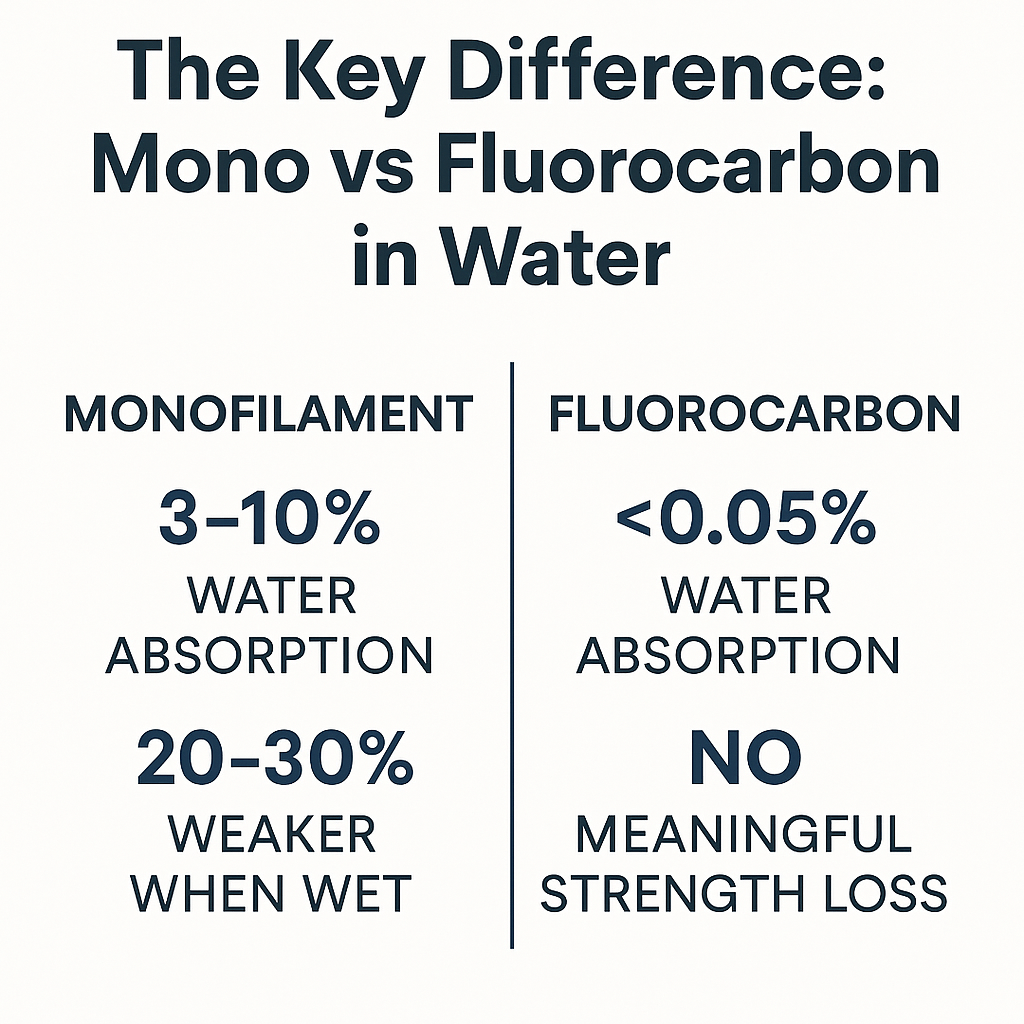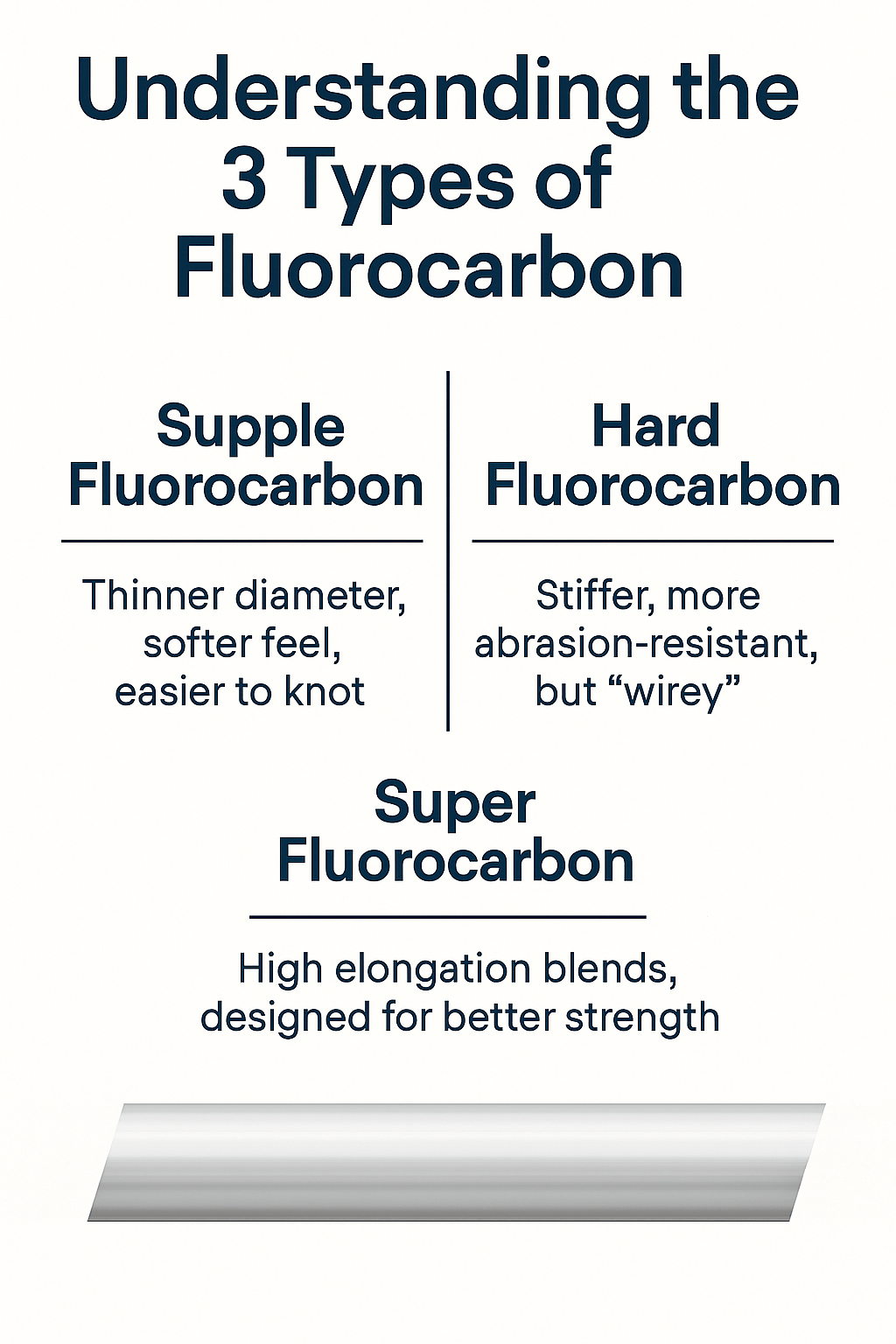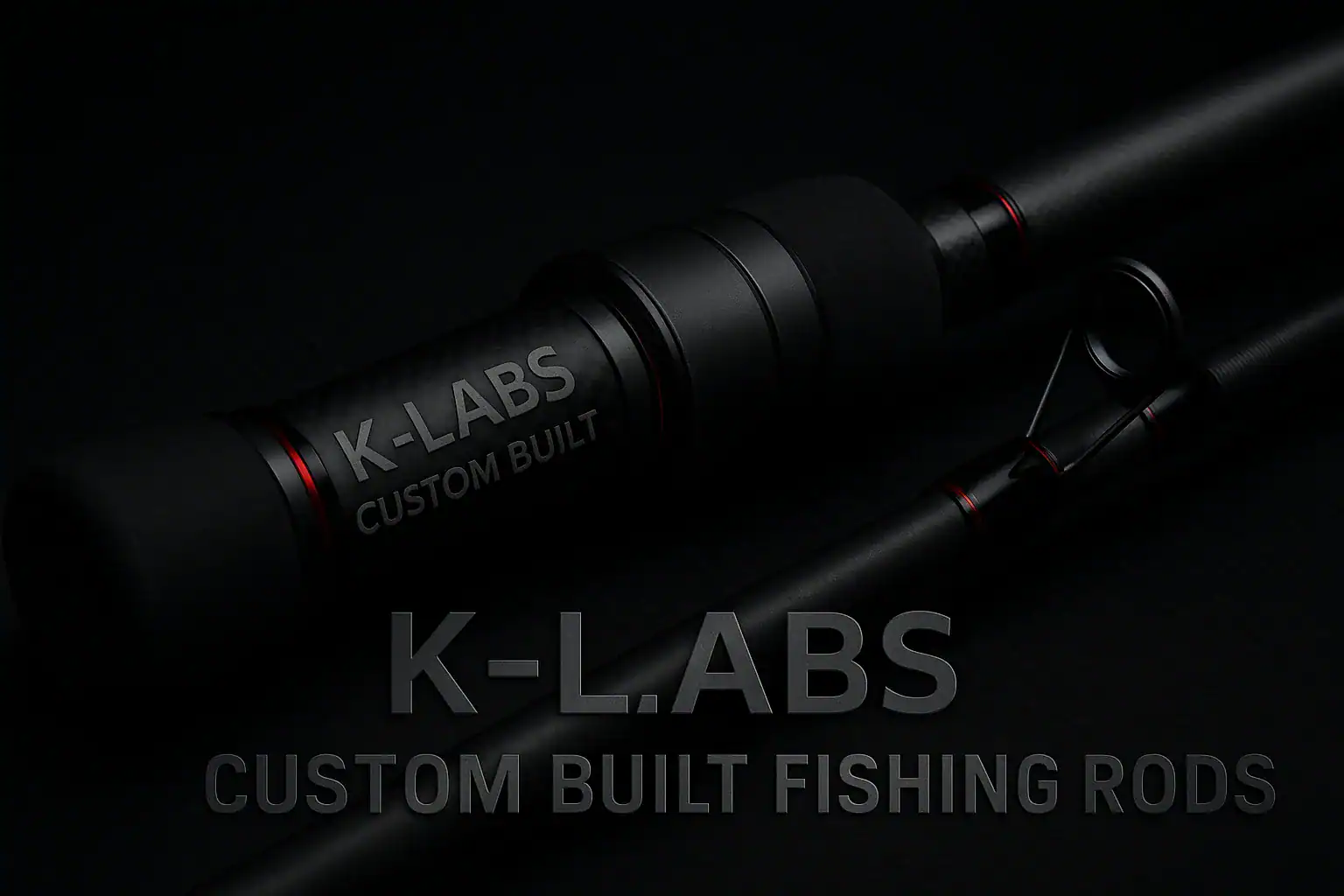When it comes to leaders and mainlines, fluorocarbon has earned its reputation as the go-to choice for anglers who want abrasion resistance, invisibility, and strength. But not all fluorocarbons are created equal. In fact, there are three main types you’ll come across: hard, supple, and super fluorocarbon — each designed with different fishing situations in mind.
This breakdown will help you understand what sets them apart, and why choosing the right one can make or break your day on the water.

Why Fluorocarbon?
Unlike monofilament, which absorbs water and loses up to 20–30% strength when wet, fluorocarbon absorbs virtually no water (<0.05%), meaning it maintains its rated breaking strain in real conditions. This is a huge advantage when fishing around structure or in heavy current where you’re pushing your tackle to its limits.
The Three Types of Fluorocarbon
1. Hard Fluorocarbon
- Purpose: Built tough for abrasion resistance.
- Attributes: Stiffer, holds its shape, and resists nicks when fishing around rocks, reefs, or shell beds.
- Best use: Perfect as a short leader in snaggy or abrasive environments.
- Trade-off: Can be harder to knot cleanly, and stiffness may reduce natural lure action.
2. Supple Fluorocarbon
- Purpose: Designed for stealth and natural presentation.
- Attributes: Softer and more flexible, allowing lures and baits to move freely.
- Best use: Great in clear water where fish are spooky, or when fishing lighter lines.
- Trade-off: Slightly less abrasion resistant than hard fluorocarbon, so it may wear quicker if dragged across rough ground.
3. Super Fluorocarbon
- Purpose: A newer blend that balances toughness with knot strength.
- Attributes: Softer and higher in elongation than hard fluoro, which means knots pull up tighter and braided lines “bite” better without slipping.
- Best use: Ideal when fishing with braid and wrap-style knots (like FG or PR knots) where security is critical.
- Trade-off: While stronger at the knot, the added softness can make it less abrasion-resistant than a pure hard fluorocarbon.

Choosing the Right Fluorocarbon
- Fishing in heavy structure? → Hard fluorocarbon will save you from bust-offs.
- Chasing finicky fish in clear water? → Supple fluorocarbon offers stealth and movement.
- Running braid with critical knots? → Super fluorocarbon helps knots lock down stronger and reduces slippage.
Like most tackle choices, it’s about matching the line to the conditions and your fishing style.
Final Word
Some days fluorocarbon won’t make a huge difference. Other days, it’s the edge between a quiet trip and a full bin. Knowing the differences between hard, supple, and super fluorocarbon gives you the tools to choose smart — and land more fish.
This post is based on my own experiences and observations on the water, along with information gathered from manufacturers and tackle testing. Other anglers may have different results depending on conditions, brands, or fishing styles.
